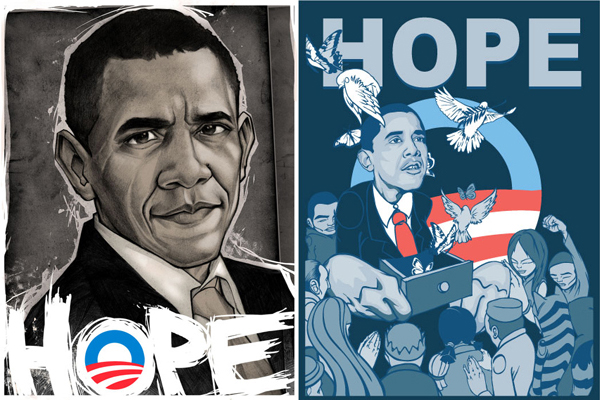A surprisingly interesting piece in the Times today mulls the meaning of garbage. Snippet:
There is also much to understand about the odd place garbage now holds in middle-class life. At least in part the impulse to redeem garbage and its handlers is found not only in these windows. Spurred by environmental concerns, attitudes have been shifting.
Instead of wanting to excommunicate our trash, we often treat it as if it were not refuse at all. We classify our waste, create different containers for it and carefully label it, the way we would collections of cherished objects. We are even instructed to rinse some garbage.
Coincidentally I just learned that the next installment of Adult Ed, a really cool-sounding series of events in Brooklyn that almost makes me wish I still lived up yonder, is also trash-related. “Trash and The City” features guest lecturers Benjamin Miller (author of Fat of the Land), Robin Nagle (anthropologist in residence at NYC Dept of Sanitation), Michael Mandiberg (Eyebeam research fellow), and Gertrude Berg (artist “who takes care of her own trash.”)
April 8 at Union Hall in Park Slope. Details here.

baskets, originally uploaded by thisisp.
[Join and contribute to the Murketing Flickr group]
Save
Posted Under:
Flickr Artifacts by Rob Walker on March 31, 2008
Comments Off on Flickr Interlude
 STYLE DECODER:
STYLE DECODER:
How a new variety of bar code became a medium
The real attraction of these codes appears to be not just cracking them but making your own. Two-dimensional codes have “this democratic thing … You can create your own, put hidden messages in it. There’s something playful in it.”
Read the column in the March 30, 2008 issue of the New York Times Magazine, or here.
Previous Murketing entries on 2-d barcodes here and here.
Consumed archive is here, and FAQ is here. Consumed Facebook page is here.
[Today Murketing.com brings you the second guest Q&A, conducted by Ada Puiu, a senior at the Schulich School of Business at York University in Toronto. Her first Q&A is here. More about Murketing.com guest Q&As here.]

Louise Ma and Richard Watts were both design/printmaking students at the Cooper Union School of Art in New York when the idea for The Shirt Project came to them, somewhere in the East Village in the spring of 2007. That idea was to “diagram the news, on shirts.” They were awarded the Rhoda Lubalin Fellowship later that year (an annual design grant from Cooper Union), and set out to produce 10 breaking-news shirts. For a $75 subscription (or, alternately, paying $15 per shirt), The Shirt Project provides 5 diagrammatic tees detailing a story that’s making news – for example, one charts the correlation between the declining US dollar and sunspot activity, while another points to just how little of the sun’s energy we’re actually utilizing.
Aside from clever graphic design, their aim is to reach those who may not always read the headline news. I find it really cool that you can raise awareness about Myanmar just by rocking a regular ol’ Jersey T. With 24-hour news channels, e-mail updates available from all major newspapers, and shows like The Daily Show with Jon Stewart, all constantly increasing the flow of information and awareness, wearing a news item on a shirt in place of a brand seems like a logical step. I contacted Louise and Richard, curious about their inspiration and goals for the future with The Shirt Project. Below is our brief Q&A. – Ada Puiu
Q: What is your goal with these t-shirts? What was your inspiration?
Louise: There are a few goals. The main one is to inform people who may not pay much attention to the news or have the time to read newspapers. The T-shirt as a format presents some limitations, but also a lot of interesting ways of sharing information. So this experiment explores those different ways of story-telling.

As for inspiration, Rich was a Threadless subscriber — he was a big fan of their shirts. We actually had our first kiss while he was in his “Dog ate my homework” shirt. Our professor, Mike Essl, teaches a class at Cooper on information design, and that really got us hooked on maps and interesting educative visuals.
Q: How do you decide which news articles should be printed on your shirts? Please continue…

Notcot, writing about new Obama posters by Sam Flores and Munk One, writes:
Regardless of whether you support Obama, it’s hard not to be in awe not only of the way that Obama’s campaign has been designed, but also how impeccably designed/inspired/executed the unofficial art that has come out to support him has been as well.
It is interesting.
I wonder: What are the precedents for a candidate inspiring, in real time, so many artist pieces such as these?

Heinz Ketchup Sign, originally uploaded by jekemp.
[Join and contribute to the Murketing Flickr group]
Posted Under:
Flickr Artifacts by Rob Walker on March 26, 2008
Comments Off on Flickr Interlude
Back during the original 1990s Internet boom, when every billion-dollar idea had supposedly started with a sketch on the back of an envelope and/or in a garage, I used to joke that I was going to go into business selling envelopes and renting out space in huge office parks that consisted of acres of garages. Want be a Net millionaire? Rent a space in one of our garages, sit in in jotting ideas on the back of one of our envelopes, and riches are sure to follow. Etc.
I was reminded of this by an interview on Marketplace last night with a guy touting the power of napkins as the key to business creativity:
Why are napkins interesting? Because when you take a napkin and you just start drawing on it and start imagining what an idea that’s in your own mind looks like, all of the sudden, you’re opening up all kinds of channels in your own mind that, if you’re just working on a computer screen or just working with the shapes that are available, say, in PowerPoint, do not happen.
Etc.
What he’s doing is selling a book on this subject, but I think he should be selling the napkins. In fact I think this is a great idea for some Etsy seller: Really cool napkins to use in solving problems or dreaming up new business models. Or maybe that will be my next move for Murketing.com, maybe I’ll start making and selling branded napkins. If anybody wants to invest, let me know.
It’s been pointed out to me in the comments and via email that there is already a napkin-idea product on the market. And a napkin-marketing product, too.

Originally uploaded by Joseph Robertson.
The caption says: “Where you can watch the latest blockbuster cloud formations. (I used to watch movies here when I was a kid).” Part of Joseph Robertson‘s “Type” set. So nice.
[Join and contribute to the Murketing Flickr group]
Posted Under:
Flickr Artifacts by Rob Walker on March 25, 2008
Comments Off on Flickr Interlude
This has nothing to do with what this site is about — although, really, what is this site about? So here goes.
I’ve listened/read/watched with some interest as people have debated how to count Hillary Clinton’s White House experience. She was First Lady — but maybe she also did really substantial stuff? Some say yes, some say no.
But at least twice now I’ve heard interviews on NPR with “regular voter” types who are supporting Hillary Clinton, who have made very different point about her White House connection. One was I think on Latino USA, the other on one of the daily shows, Day to Day, or maybe All Things Considered. (I’m not always taking notes.) What these voters — in one case a man, and in another case a couple (man and woman) — all said was in essence: Well, if she’s there, she’s got Bill with her, and he’s done this before.
The implication seems to be that Bill will either secretly run the show, or at the very least use his experience to keep his wife from making any dumb mistakes.
In other words, the point isn’t whether or not Hillary Clinton is particularly capable and has a track record that proves it. The point is that she’s married to someone with a track record.
This is not a very enlightened reason to back the person who would be our first woman president. In fact, ever since I heard the couple talking about how Bill would be there and that’s why they were voting for Hillary, I’ve thought: “Isn’t that actually a fairly sexist attitude?”
I wonder how widespread this rationale might be? I certainly don’t think the Clinton campaign has pushed the “you get Bill, too” line very hard since early in the campaign, when the press’s take is that Bill had to get to the background because he was saying things that were hurting the campaign overall. And maybe he was, with some voters.
But meanwhile, what about voters like these people? Aren’t they likely to shrug off doubts about whether Sen. Clinton’s “experience” as First Lady really amounts to anything? And aren’t they like to shrug it off for, you know, pretty bad reasons? They don’t care about her experience anyway — they’re evidently voting for her because of him.
Maybe I’m just reading too much into a couple of randomly heard NPR interviews. Or maybe this has been dealt with elsewhere in articles I’ve missed. But I wonder.

Well this pretty cool: Kate Bingaman-Burt, whose drawings of her own credit card statements I’ve written about in the past, is doing a letterpress print — with colors! — edition of 100 of one of those statements. Via Poketo.
While I normally enjoy The Hater, today I’m annoyed: I had managed to live in happy ignorance of the Alicia Keys “minisode” series on behalf of Dove until now. Not only that, I watched the trailer. Apparently what comes after decades of annoying ads punctuating vapid TV series is a seamless blend of these varying forms of awfulness, toggling back and forth one to the other so that you cannot tell whether you are hating the entertainment or hating the ads. Hater says:
Now I have to be grateful that every commercial isn’t a 5-minute long tiny sitcom about Alicia Keys and company navigating their early 20s in the big city with the help of friendship and Dove deodorant? Thanks, Dove. The bar is so low now it’s underground.
That’s funny. But not funny enough. So if you’d like your day ruined, too: here.
Posted Under:
Entertainment,
Murketing by Rob Walker on March 25, 2008
Comments Off on Further (failed) experiments in TiVo-proof advertising
Probably I should wait until later when my head is clearer to post about this, but it’s just too awesomely meta for me to wait.
You know how you read things that back this or that point about human behavior by citing fMRI pictures of neurons firing in some section of the brain? I’ve written stuff like this myself. It sounds so impressive: A picture of what’s happening in the brain! That proves … something! It’s a classic example of deploying rational empirical expertise, or something that certainly looks/sounds like it, to make a point sound more convincing.
Well. Some delightfully wiseacre academic types have apparently done a study about how the citation of neuroscience “evidence” affects the reaction of the reader/listener. The upshot is: stuff that seems picture-of-the-brain empirical is often rewarded with more credibility than it might actually deserve.
Now, I say “apparently” because — hilariously — I haven’t read the paper (seems you have to be a subscriber to the journal to get access to it, and I haven’t had time to investigate further). I’ve read the abstract, and two blog posts about it.
The paper is called “The Seductive Allure of Neuroscience Explanations.” From the abstract, it seems that the researchers tested three different groups: “naive adults,” students of neuroscience, and neuroscience experts. Each was presented with a description of some psychological phenomenon, and an explanation for it — sometimes a logical explanation, sometimes bullshit. In some cases, each sort of explanation cited neuroscience data. “Crucially,” the abstract says, “the neuroscience information was irrelevant to the logic of the explanation.”
Results?
Subjects in the two nonexpert groups … judged that explanations with logically irrelevant neuroscience information were more satisfying than explanations without. The neuroscience information had a particularly striking effect on nonexperts’ judgments of bad explanations, masking otherwise salient problems in these explanations.
Fantastic.
The pointer here comes from the blog Neuromarketing, whose author humorously sums up the implications: “Cloak BS in neuroscientific jargon, and people find it more plausible!”
(The author also kids: “Those are interesting findings that would be a lot more credible if backed up with fMRI scans.” It says something about me that I find that to be a truly amusing joke.)
The other blog post I read is this, which gives a more detailed summation of the study itself.

Ice, originally uploaded by Quino Terceño.
[Join and contribute to the Murketing Flickr group]

Were I ever to organize an exhibition of stealth iconography in American life, I would be sure to include that poster of a kitten clinging to a tree: “Hang In There.” You’ve seen it.
I think it’s fair to count such posters as an example of the “motivational” genre. You’ve seen other examples of that, too. Posters exhorting you, basically, to do a better job, in settings as diverse as cubicle farms and the factory floor. These are the kinds of posters we are so used to seeing that we no longer see them.
Which makes it a form ripe for re-visiting.
One re-visitation strategy is the parody. Just the other day I was reminded of Demotivators, a line of posters and products by Despair.com, “Increasing Success By Lowering Expectations.” It’s funny stuff. I wonder if an endless recession-speculation newsloop helps their business? I would think so.
Another strategy that’s popular in many categories is basically: update, modernize, reinvent in a way that’s more in-line with today’s taste standards. Given that motivational posters are among the most vapid forms of communication ever devised, I assumed that this approach simply could not apply here. However, these Alternative Motivational Posters (encountered this weekend via Ffffound) have proved me wrong. Some of them actually look pretty nice.
Will I be buying any? Well, I only have one employee, and I know he’s way too much of a malcontent to reach with this sort of thing, because he’s me.
An April 2007 Consumed column used toasters as a case study in the question of innovation vs. novelty. Seth Godin offers an amusing smackdown of an unnamed toaster that apparently was a little too innovative for its own (or the buyer’s) good:
Here’s what I have to do to use it:
1. Choose the number of slices, and bagel or bread.
2. Remember whether it counts the slices from the left or the right (the left).
3. Insert the bread.
4. Push down the handle.
5. Choose toast or defrost.
6. Make sure the darkness level is right. (This doesn’t count, because it usually is).
7. Press on.
8. Wait till it beeps.
9. Lift the handle I pressed in #4.
10. Turn it off.
He’s not happy.




 "
"

 STYLE DECODER:
STYLE DECODER:



















 Kim Fellner's book
Kim Fellner's book  A
A